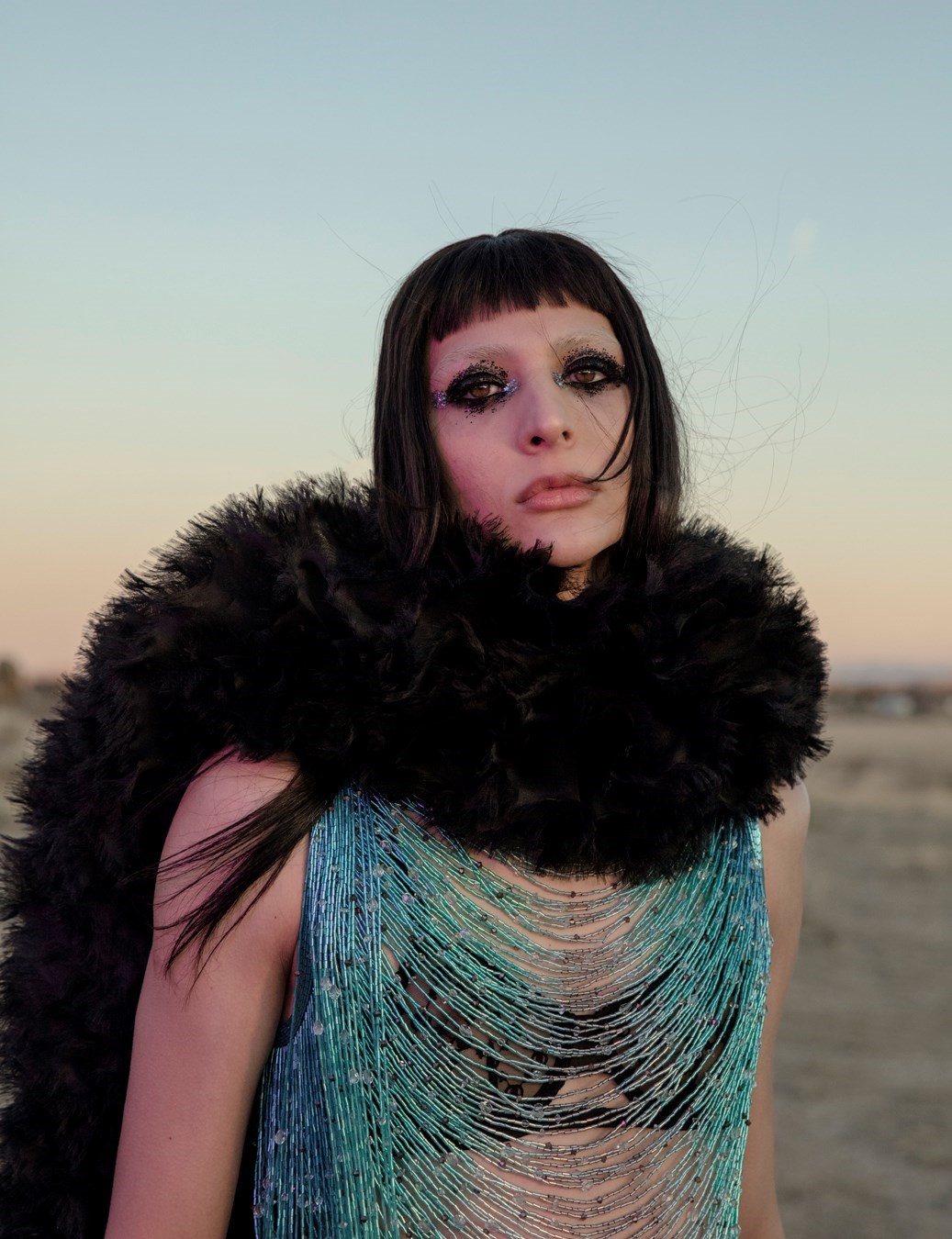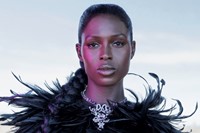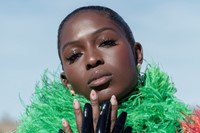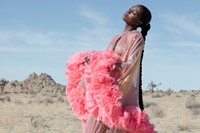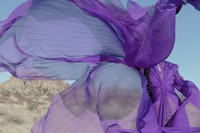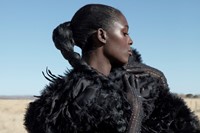When Alessandro Michele turned Hollywood Boulevard into a catwalk last November, the designer was not only celebrating 100 years of Gucci but “the mythology of the possible”. For a young Michele, living in a squat on the outskirts of Rome, Hollywood – and specifically the glamour of its leading ladies – was a way to escape and to dream. “Hollywood seemed a bright and shiny star,” he recalls, “those nine letters dripping with desire.”
For the Hollywood Boulevard show – or the Gucci Love Parade – the Italian house sent 115 models down its catwalk, a unique cast of personalities to herald the next century of Gucci; “idols of a new contemporary cosmogony,” in the words of Michele. Among them were rising models Lex Peckham and Justin Thomas, Native activist and model Quannah Chasinghorse, and Mexican model Cici Tamez.
Shot by Jackie Nickerson in the LA desert for the new issue of AnOther, and styled by Katie Shillingford in Gucci, Michele’s new idols share their own mythologies of the possible and the ways in which they have fantasised about another life or a better world, where anything is possible.
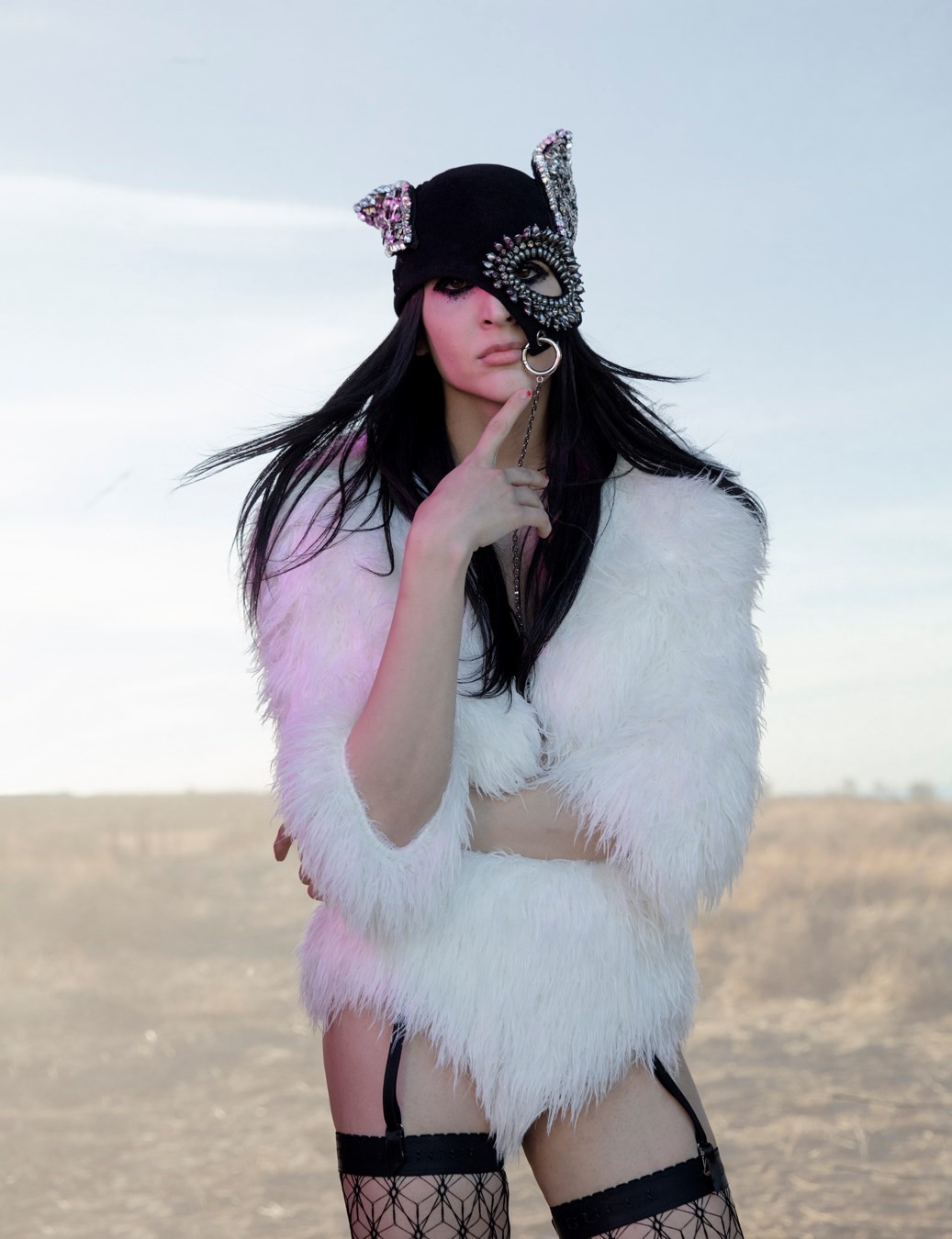
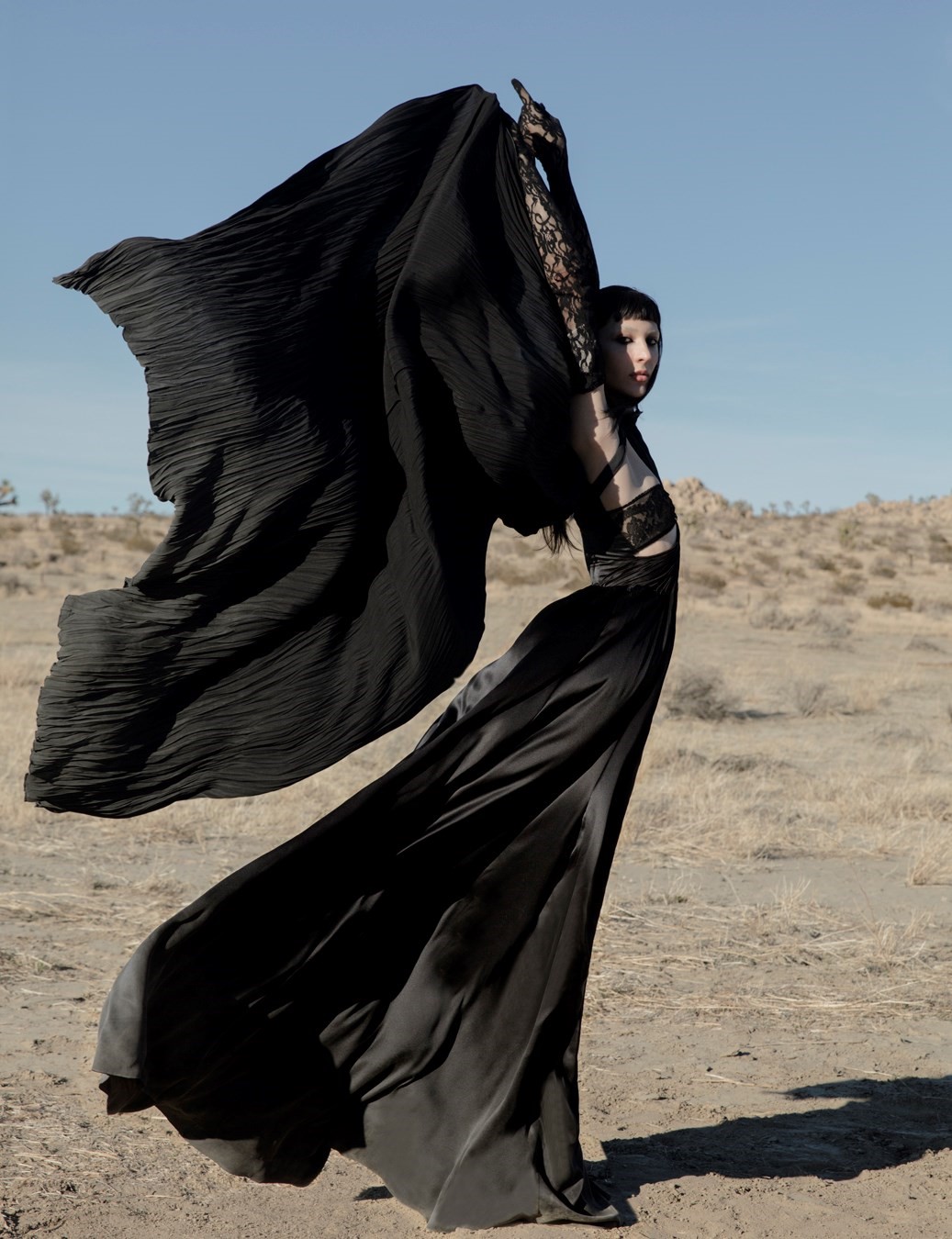
Cici Tamez
Raised between Mexico and Texas, near the border, Cici Tamez was always a self-professed black sheep, whether at home or at school, and yet always sure of herself. “I am a transgender girl who was raised in a very conservative environment, very Catholic and very colonised, so I’ve always been rebellious; I came out as trans and have been living as myself since I was 12.”
Working in a call centre in Mexico at 16 years old, Cici was scouted through photos she uploaded to Facebook. “I sold my jeep and packed my bag and told my parents the day before my flight that I was moving to Mexico City.” She describes her experience as a model there as “stealthy”, at least at first, meaning she was not always able to be open about being trans. When she eventually decided to be, she lost work, despite the fact that at that time, around 2015, Hari Nef and Andreja Pejić were beginning to improve representation. “They were beacons of light for me personally, but they were white – references from my own country were nonexistent.”
Today, the landscape looks very different for trans models, and Cici now meets another trans person at almost every casting she attends. Cici currently lives in New York City, models for Moschino, and will soon work with Bottega Veneta (for Daniel Lee’s last collection campaign), as well as walking in Gucci’s Love Parade show and starring in the house’s campaign. “Alessandro put me in the most beautiful black gothic dress with lace gloves, it was right up my alley. I loved it so much, I walked the shit out of that show.”
“I grew up watching telenovelas, and I always looked up to the villains” – Cici Tamez
“Growing up, my mum had telenovelas going all the time. Telenovelas are like soap operas, but in Mexico, there’s twenty times more drama. Old Hollywood glamour was very popular on Mexican TV in the 2000s, and this was the style of telenovelas; big coiffed hair, tailored gowns, huge earrings. It was very camp and glamorous. The most glamorous characters were always the villains, and I loved them. I think I’ve always gravitated towards darker, more gothic, or obscure kinds of beauty, so the villains were perfect for me – and they always had the best one-liners and storylines, with huge plots to get rid of the star or protagonist.
“I’ve always been a caring person who was scared to do bad things, but I admired their despicableness. I imagined I was like them as a kind of defense mechanism, creating an evil alter ego so people wouldn’t bully me. At times, telenovelas were the only way I could escape, the only way to forget for ten minutes I was in the ‘wrong body’ – although I didn’t feel that way, that’s just what people told me. My body never felt alien to me, like ‘this body isn’t mine’, only that I was born in the wrong social circumstances, in a world where people viewed me in a way I didn’t agree with.
“Now, I don’t only feel seen as who I am but celebrated as who I am, not just in the cities I’m in – Mexico City is such a queer space where trans women are viewed just like any other part of the LGBTQ+ spectrum, and New York is too – but in my field of work. I don’t feel ostracised, and I have a lot of opportunities I might not have in other fields. I still watch telenovelas but they’re different now – they give me more of a nostalgic feel, they remind me of home and who I used to be. I still identify with the villain’s beauty, but not with how evil they are. I don’t see myself as the villain anymore.”
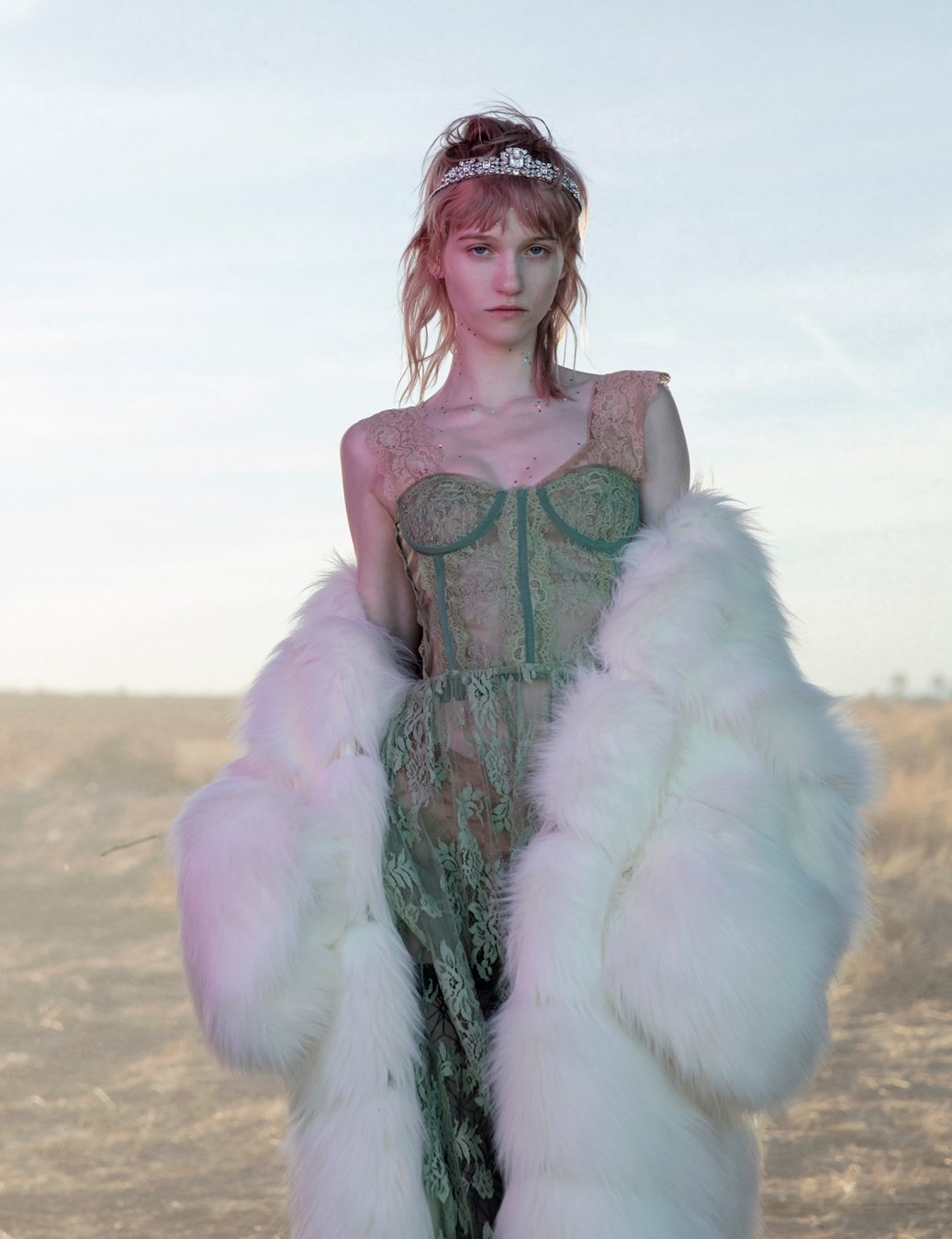

Lex Peckham
Raised in Rhode Island, Lex Peckham was signed as a model at the beginning of 2020. Their first big break came in the form of an McQ campaign, closely followed by Saint Laurent Denim. The anime-loving 21-year-old has since gone on to walk in their first show for Gucci Love Parade, followed by a shoot for the accompanying campaign with Mert and Marcus. Peckham is now based in New York. In their spare time, they hang with their friends, which includes fellow model and queer activist Aaron Rose Philip. Peckham has also recently started pole dancing.
“I explored my identity online through fashion, on Tumblr and Instagram” – Lex Peckham
”Growing up, I was always on the internet in some way, shape or form as someone who was pursuing fashion as a hobby. From a young age, I started connecting colours to serotonin boosts, as a Tumblr baby, of course. As I got older I became interested in putting together my own shoots and outfits as a fun hobby on Instagram. It allowed me to express myself creatively through my autism and find comfort in making what, in my head, felt like the perfect outfit for myself. Not knowing that one day this would become my career and the opportunities I would get from that old Instagram [account] continues to inspire me to be myself and love myself in my work and in this industry. I remember watching old fashion shows secretly at 3am while I was supposed to be sleeping for school – like Patti Wilson and Valentino – and I would fall in love with different stylists that inspired me creatively.
“With autism, a lot of the time it can be hard to find comfort in things you enjoy unless it eases your mind. Fashion has always been my comfort and will continue to be my comfort as long as it exists. Despite not having my old Instagram anymore, that part of my life will always be a defining moment for me and continues to push me to try new things and explore different ways of expressing myself. I find myself the most beautiful when I’m comfortable in my own skin as I believe that no one can love and appreciate you in the way you can learn to love and appreciate yourself, and nothing is more rewarding than that comfort of knowing you are solid in your identity.”
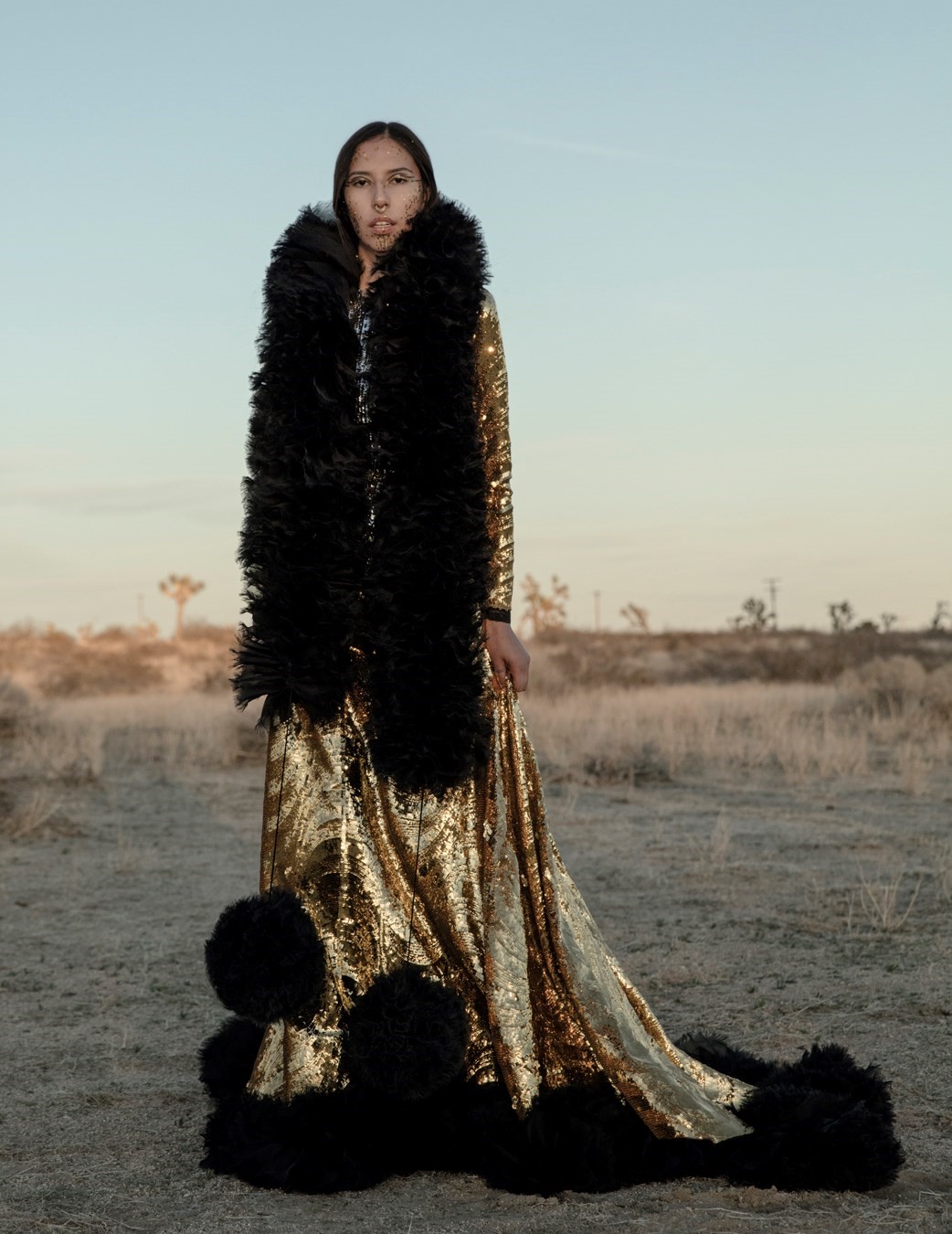
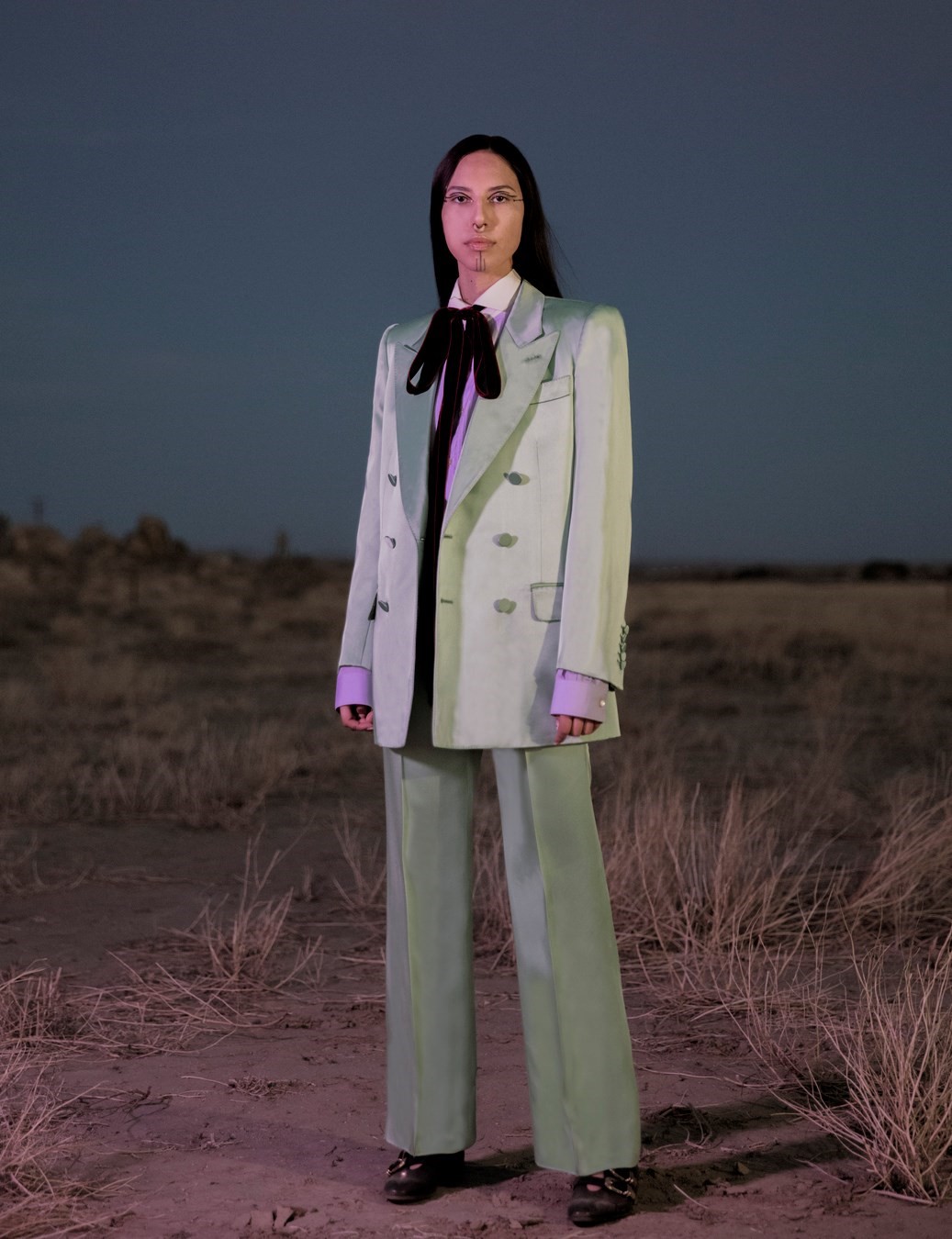
Quannah Chasinghorse
Now 19 years old, Quannah Chasinghorse got her first modelling job during the Trump-Biden election, when she was noticed online for her advocacy work and cast in a Calvin Klein campaign encouraging people to vote. A couple of months later, in 2020, she was signed to IMG. “Modelling was not a part of the plan,” she says. “I was not expecting it, but I am grateful that it happened.”
Chasinghorse grew up in Fairbanks, Alaska and currently lives in LA. Her Indigenous ancestry is Hän Gwich’in – from Alaska and Canada – and Sičangu/Oglala Lakota – from South Dakota. Her face tattoos are part of a tradition called Yidįįłtoo and were hand-poked by her mother. “A lot of our culture has been lost through genocide and assimilation,” she says. “That’s why I practice stick and poke, to bring my culture forward with me.” It is also why she talks publicly about the issues facing Native communities, she explains. “Being one of the first from the community to reach these so-called ‘levels’ in fashion, I have a responsibility to educate people, to teach people that not only are we still here but that all of our tribes are very different, and that Turtle Island – also known as North America – has been stolen from indigenous people.”
Chasinghorse wants to create a conversation about Native representation in fashion and cultural appropriation. She also wants to bring awareness to the ongoing fights of sacred land protectors against oil and gas drilling: “I have been talking about that since the beginning. And there are a lot of things connected to that like murdered and missing Indigenous girls and women – our communities are surrounded by these oil fields and camps that bring other men into these areas, making women more high risk. Oil, gas extraction and mining in Alaska are also linked to climate change, so I want to make those connections and have those conversations.” These topics are often those that people don’t like to talk about because it’s “scary”, she says, but we have to have those conversations: “In order to heal, move on and have justice”.
“The matriarchs of my Native community have always inspired the work that I do” – Quannah Chasinghorse
“The Native community has always inspired me and kept me going, whatever work I do or whatever community I go into. Particularly my mum and my aunties. In many Native American tribes, there’s a matriarchal society, meaning the women have a lot of say in everything, and we have much respect for women’s ability to have intuition and give life. My mum and my aunties were a great example to me growing up – each and every one does something for the community. My mum has been a big part of different advocacy movements over the years and worked as a tribal police officer. One auntie is a tribal attorney, the other works for an Alaskan nonprofit, and another teaches tribal governance.
“My mum was a single parent all my life so I was raised by this community of strong women teaching me how to be passionate, independent and how not to need someone to depend on. They would come for dinner and my mum would sit at the table with them and I would listen to them talk about work, the community, the movements. I got educated, and as I got older I asked more questions. I wanted to be a part of it. They taught me how to be humble but also embrace who I am and not be ashamed of that, when assimilation at residential schools can often make Native kids feel ashamed. They encouraged me to use my voice, be me and not be apologetic about it. To know that we come from so much strength and knowledge.”
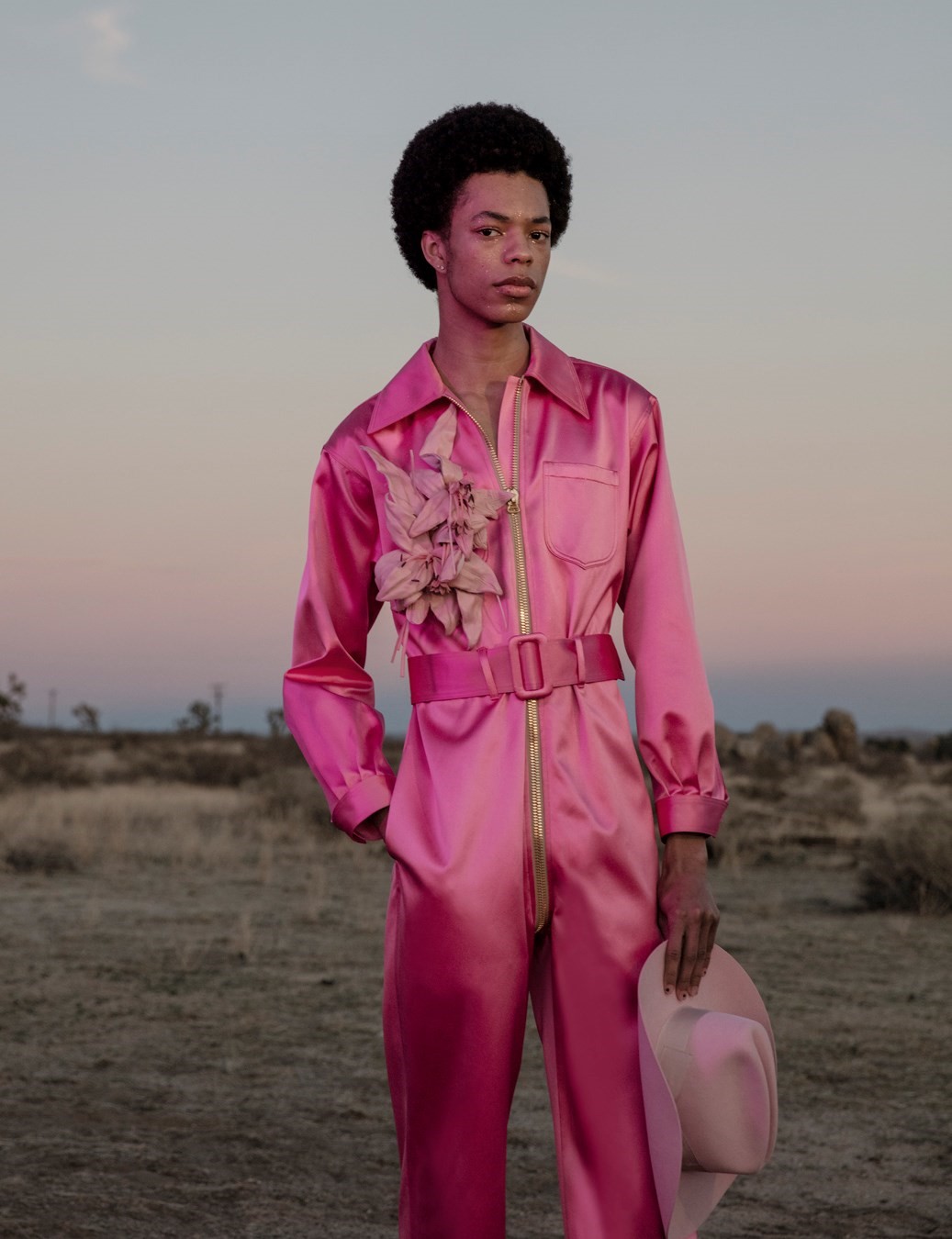
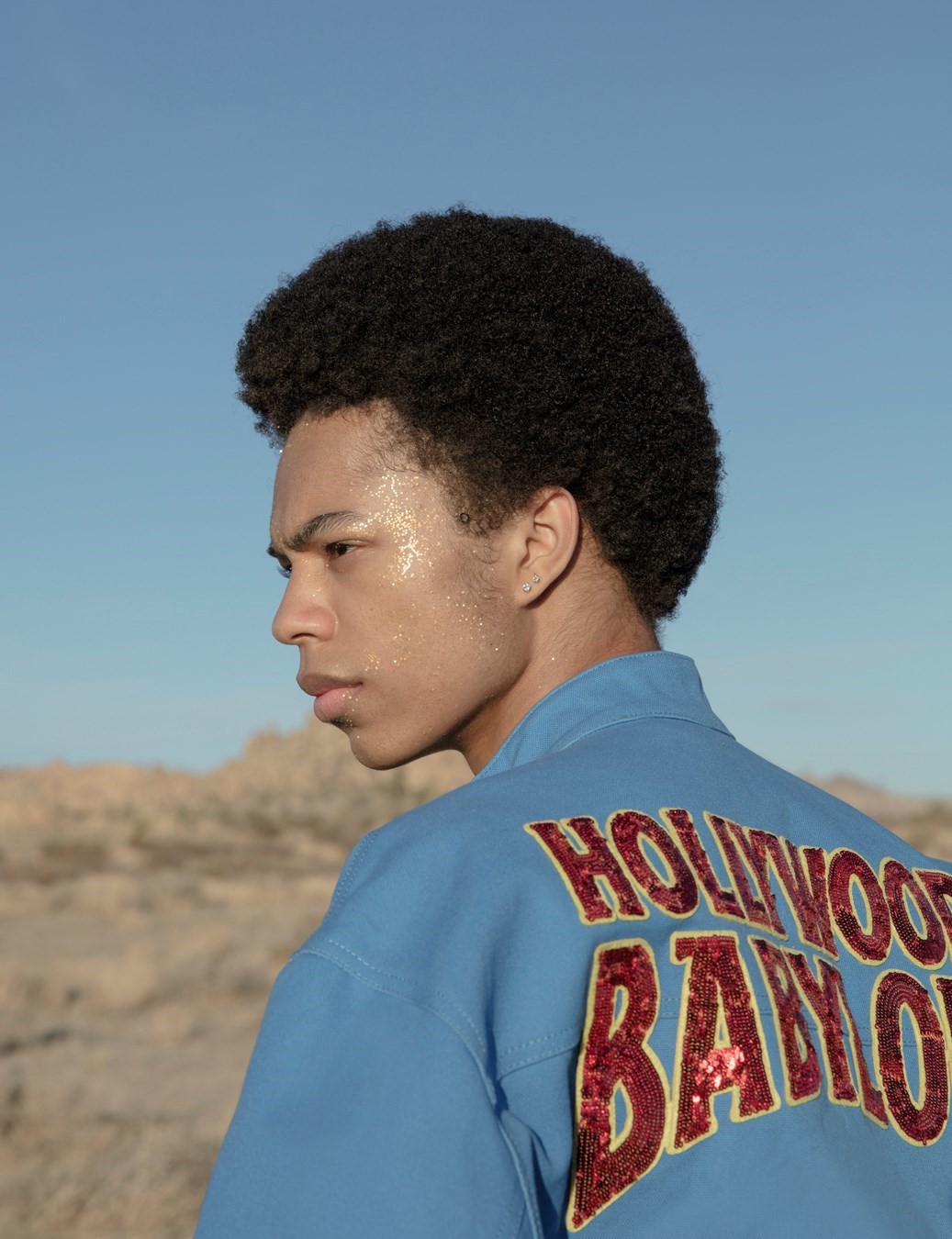
Justin Thomas
Growing up in the New York suburbs on Long Island, Justin Thomas just recently moved to New York City for school. He is currently in his second year of illustration at the Fashion Institute of Technology. “It’s much better now that I’m on campus. Honestly, it felt like watching YouTube videos last year,” he says, of a year spent studying through the pandemic. Thankfully the year was interesting in other ways: Gucci Love Parade was the most exciting debut show imaginable, he says. “Gucci was such a beautiful experience. Like, I have to remind myself that it was real.”
As well as Gucci, Thomas has walked for Telfar A/W22 and continues drawing fanatically on the side. “I’ve been drawing all of my life. It’s been something that has been consistent for me, and I really love portraiture.” Recently, after doing more modelling work, his drawings have taken on more of a fashion illustration vibe: “I will reference designers and clothing in the portraits that I make, and I kind of like to use the clothing and accessories as a way to characterise a person.”
“Coming-of-age films taught me it’s OK to be uncomfortable, we’re always coming of age” – Justin Thomas
“When I think of coming-of-age movies or TV shows, I think of that trope of being at an adolescent stage and feeling like you’re moving up in the world, or like it's time for you to move up, that you're being pushed to mature. In a lot of ways, that’s where I’m at now, and it’s nice to see it reflected back at you – this search for an identity, or not knowing what it feels like to be ‘me’. It’s definitely something I thought about a lot in high school, too, before moving to the city; as a teenager, you don’t really know what makes you you, versus what society expects of you.
“As for the movies and TV shows I like, I really love A24 – I love what they do with Euphoria and I loved Moonlight as a coming-of-age film. I also love the movie The Edge of Seventeen, and a show on HBO Max called Generation. One thing that I liked about Generation was that they didn’t hesitate to make being a teenager look awkward. I think that a lot of the time, movies and shows can make things look very put together or set unrealistic expectations. But it’s important to make the viewer feel like it’s OK to be uncomfortable sometimes – because when you’re outside of your comfort zone, that’s when you learn the most.
“I love coming-of-age movies because I think that everybody is still figuring it out. And I think that we all change, whether we think we have it figured out or not. I do have a tendency to overthink things, but recently, I’ve kind of learned to embrace the chaos, the not knowing. I think that there’s joy to be found in being someone new each day, or else discovering something new about yourself. I treat it more as a constant reinvention rather than a fear of the unknown. I think of coming of age as a beginning, rather than a story with a start and an end … we never really, actually come of age or fully mature. We are always on that journey.”
